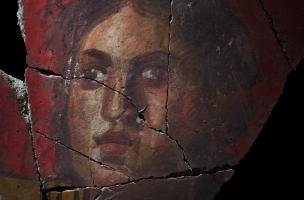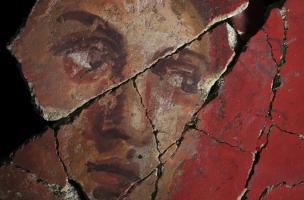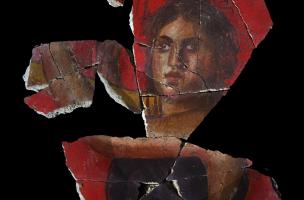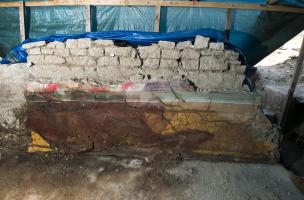You are here
Discovery in France of a new princely grave from the 5th century BC
Since October 2014, a team of Inrap archaeologists has been excavating, under prescription of the State (Drac Champagne-Ardenne), a princely grave dated to the early 5th century BC, in an exceptional monumental funerary complex in Lavau (Aube).
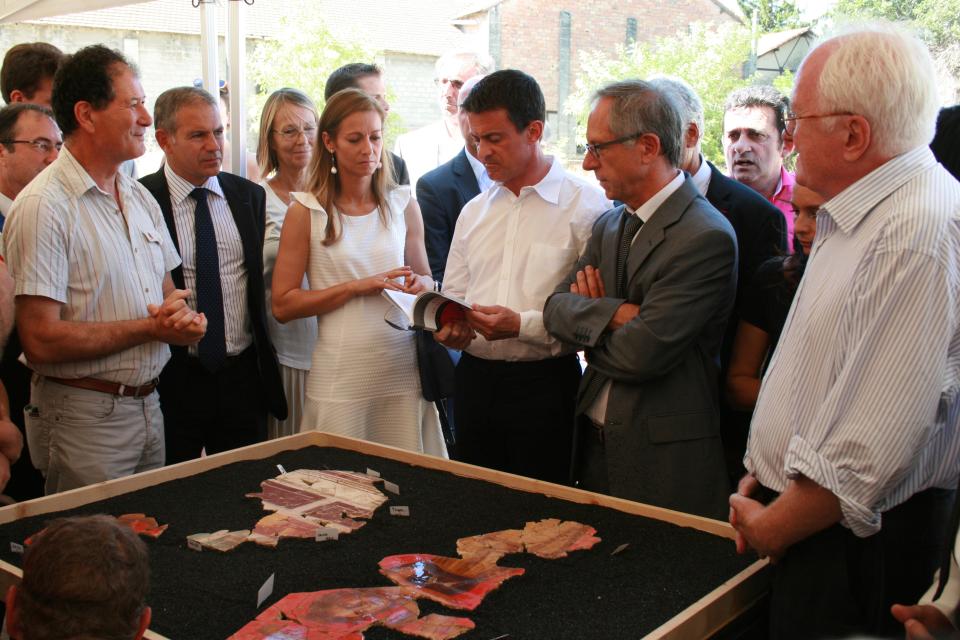
The piece is Etruscan or Greek. Inside the cauldron, there is an oenochoe pot with black-figure decoration: Dionysus lying under a vine facing a female. This appears to be a banquet scene, a recurrent theme in Greek iconography. The lip and foot of this jug are set with gold, embellished with a decoration of fine meanders. This is currently the northernmost find of this type. This Greco-Italian drinking vessel reflects the banquet practices of Celtic aristocratic elites.
Celtic principalities and Etruscan or Greek city-states
At the end of the 6th century and the beginning of the 5th century BC, economic activities significantly developed in the Western Etruscan and Greek city-states, in Marseille in particular. Seeking slaves, metals and precious goods (including amber), Mediterranean merchants established contacts with the continental Celtic communities.
Those that controlled the natural communication routes, notably in the Loire-Seine-Saône-Rhine-Danube inter-fluvial zone, benefitted from this circulation and their elites accumulated numerous prestige goods, the most remarkable of which are found buried in the monumental tumulus mounds – at La Heuneburg and Hochdorf in Germany, for example, along with Bourges, Vix, and now Lavau.
A funerary space and memorial location
The funerary function of this site is remarkable, notably in its perennial nature. Incineration tombs and burial mounds delimited by trenches were created at the end of the Bronze Age (approximately 1300 to 800 BC). During the Early Iron Age, they were succeeded by a warrior and his iron sword, along with woman decorated with solid bronze bracelets.
At around 500 BC, trenches nearly three meters deep grouped these ancient funerary monuments and the later princely grave within the same monumental ensemble. This memorial location was still in use during the Gallo-Roman period when the mound trenches were emptied and Antique graves then occupied the space.
A renewal of our knowledge of Celtic principalities
The excavation of the Lavau grave contributes new elements to our knowledge of the princely phenomenon during the Early Iron Age in Western Europe. Better preserved than the Vix Chariot Graves (Côte-d’Or) and the Hochdorf Grave in Bade-Wurtemberg (Germany), the Lavau Grave is now being studied using the latest methods and techniques developed by Inrap and already used in the excavation of the Warcq Chariot Grave (Ardennes). A highly complementary interdisciplinary team is thus working in the field to make this an exemplary preventive archeological operation.
Alain Genot, archéologue au musée départemental Arles antique
Mahaut Tyrrell
Media communication
Inrap, media partnerships and relations
01 40 08 80 24
mahaut.tyrrell [at] inrap.fr ( )



